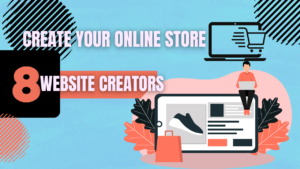
If you’ve read our previous articles on how to find a profitable niche and how to evaluate products for online sales, you might have already come up with some innovative product ideas. This could be an exciting moment for an entrepreneur; the enthusiasm can serve as a driving force and motivate you to take your product idea more seriously.
However, very often, some entrepreneurs become discouraged and lose their momentum when it comes to searching or “sourcing” their products. Whether it’s manufacturing your own product or finding suppliers to purchase in bulk from, the task is often not very straightforward.
In this article, we will explore the fundamentals of sourcing suppliers, wholesalers, and manufacturers for your next project. We will look at some places where you can conduct your research, how to approach suppliers, and what you should ask them.
Let’s get started.
How to Find Suppliers for Your Store
Assess Your Search Before diving into your search, there are a few key things to consider. First and foremost, you must determine what type of supplier you’re looking for in your online store.
The most common options include:
- Manufacturer to produce or create a specific product of interest or your unique product idea.
- Supplier, which can also encompass manufacturers, wholesalers, or distributors, to purchase existing brands and products.
- Dropshipper to provide products and manage order fulfillment for existing products and brands.
Recommended Reading: The advantages of creating a site from scratch for SEO
Compare Domestic and International

Suppliers One common question when searching for suppliers, especially if you plan to manufacture your product or buy it in bulk for resale, is whether to source domestically or internationally. It’s well-known that obtaining products from abroad is often cheaper, but there are many other factors to consider in your decision.
Both domestic and international sourcing have their advantages and disadvantages, which we’ll explore below:
Domestic Sourcing
Pros:
- Higher labor standards and better manufacturing quality.
- Easier communication with no language barrier.
- Marketing advantage from selling a product made in your own country.
- Easier to verify manufacturers’ reputations.
- Shorter delivery times.
- Stronger protection of intellectual property rights.
- Better payment security and recourse.
Cons:
- Higher manufacturing costs.
- Fewer product choices (as many products are no longer produced domestically).
International Sourcing
Pros:
- Lower manufacturing costs.
- A variety of manufacturers to choose from.
- Online supplier portals make it easier to find international suppliers.
Cons:
- Decreased perceived value from consumers’ perspective.
- Lower labor and manufacturing standards (generally).
- Limited protection of intellectual property.
- Language and communication barriers.
- Longer delivery times.
- Cultural differences in business practices.
- Import and customs clearance procedures.
- Less payment security and recourse.
Further read: The different types of risks for your purchasing process
Consult Professional Directories
Once you have a clearer idea of what you’re looking for and the pros and cons of domestic and international sourcing, where should you begin your search? Naturally, the internet is the best place to start, but there are specific resources that can help expedite your research.
Directories
Online free supplier directories can be some of the most valuable resources. These directories may contain profiles of hundreds or even thousands of manufacturers, wholesalers, and suppliers. Below, we’ve listed some popular directories that include both national and international suppliers.
European Online Directories
- Supplychainbrain
- Ezilon
- Eurotrans
Professional Directories at Local Libraries
Many libraries subscribe to online business and supplier directories that you wouldn’t typically be able to access without paying significant fees. These directories contain profiles of various manufacturers, wholesalers, and distributors located in different regions of the world, depending on the specific directory.
Make sure to call your local library in advance and ask if you can access these private directories. For larger libraries, you may need to coordinate with the business service and IT departments.
Find Suppliers on Google
While we’re accustomed to searching for just about anything online, searching for suppliers is less straightforward. Suppliers tend to have a limited online presence, and their websites are often not well-optimized for search engines. Moreover, Google frequently updates its search algorithm, which can make it challenging to find manufacturers or wholesalers.
Therefore, you’ll need to put in more effort than usual to find suppliers on Google. You may need to explore results beyond the first page, going as far as page ten or more. It’s essential to use various search terms, such as “wholesale,” “wholesaler,” and “distributor,” as these terms can be used interchangeably. Familiarizing yourself with Google’s search shortcuts can improve the quality of your searches and, consequently, your results.
Seek Recommendations
Some of the best leads can come from recommendations by friends and family. Social networks can facilitate the spread of your message, so be sure to use these channels. As you begin to discover suppliers, even if they don’t precisely match what you’re looking for, be sure to ask if they can point you in the right direction. Being part of the industry, they likely have valuable contacts, and many will be happy to recommend someone who might be a better fit.
Search by NACE
Code Another way to find product suppliers is by searching for products using their NACE code. NACE stands for the Nomenclature of Economic Activities in the European Community, and it’s almost certain that every industry and product you can think of is linked to its unique NACE code.
Sometimes, manufacturers and suppliers list their products using their NACE code, making it easier to find manufacturers and suppliers, especially when using professional directories.
Request a Quote
Once you’ve identified a suitable supplier, how will you approach them? The most important question you’ll have is, “How much?” But before rushing to send the supplier your request for a quote, take a few minutes to think about the topics you want to discuss and the questions you should ask. Planning your email will increase your chances of receiving a response and obtaining the right information.
Here are some important questions to consider when sending your email to suppliers:
- What is your minimum order quantity (MOQ)? You need to ensure you can handle their minimums and afford them. The minimum order quantity can vary significantly depending on the product and supplier, so it’s essential to address this upfront.
- What is your sample price? You’ll likely want to inspect samples before placing a full order. Sample prices vary depending on the product and supplier. Some suppliers that receive many requests might adjust retail prices and send you samples at a reduced cost, while others may provide samples for free.
- What is your production price? One of the most critical questions to ask is, “How much does it cost to manufacture the product?” You should probably ask for pricing for various quantities to get a sense of their pricing and volume discounts for larger quantities.
- What is your lead time for production? Knowing the time required to produce your order is a crucial consideration, and depending on your business, time can be critical.
- What are your payment terms? Several suppliers will require new businesses to pay the full order amount upfront. This is crucial to know because inventory represents a significant cost for e-commerce startups. You should also inquire if they offer payment terms for future orders.
Suppliers are often inundated with inquiries from curious but not-so-serious buyers. Don’t be discouraged if you don’t receive an immediate response. Follow up via email and, if necessary, by phone to demonstrate the seriousness of your interest.
So, how can you ensure your inquiry doesn’t get ignored? There are a few things to avoid when contacting suppliers for the first time:
- Overly long emails: The first email you send to a manufacturer should be clear and concise. Avoid sharing too much about your background and experience. The initial email should focus on assessing whether there’s a strong compatibility between you and the supplier. Concentrate on what genuinely interests the suppliers, such as product details you’re trying to source.
- Asking for too much information: Requests can be challenging for suppliers to process. It’s crucial to ask for some prices for various quantities, but avoid overwhelming them with requests for excessive information. Structure your questions to gather essential details that can help you assess compatibility.
- Mentioning a too-small order quantity: If you request a quote well below the minimum order quantity, you may not receive responses from suppliers. If you’re unsure whether your order is too small, consider calling them or sending a simple email inquiry to inquire about their minimum order requirement.
When contacting suppliers located abroad, write your message in correct and straightforward English, bearing in mind that some may use translation programs to translate your email and their response. Also, when asking questions, it’s better to number them so they can respond to each one easily. This streamlines your communication.
Here’s an example of an email to initiate contact with your potential suppliers:
Subject: Inquiry Regarding [Product Name]
Hello,
My name is [Your Name], and I represent the company [Your Company Name].
I am interested in the possibility of placing an order for [Product Name]. I would like to ask you a few questions before proceeding:
- What is your minimum order quantity?
- What is your per-unit cost for the minimum order and for an order three times the minimum quantity?
- What are the payment terms for new customers?
I would also like to order a sample of [Product Name] to assess its quality. Could you please provide the sample cost, including shipping to the following address:
[Your Address]
Thank you,
[Your Name]
As you can see from the template above, it’s brief and focused on ensuring a strong fit. I’ve also made the straightforward move to order a sample directly in case there is indeed compatibility. Once I receive the samples and if I like them, I can delve into more details. This shows that I’m not wasting their time or mine.
Negotiate Minimums
If you’re new to sourcing suppliers, you’ll quickly become familiar with the concept of “minimum order quantities” or “minimum order limits.” Manufacturers often require an initial commitment to purchase hundreds or even thousands of units for your first order, depending on the product and the manufacturer.
Minimum order quantities are generally negotiable, and before you start negotiating, it’s essential to understand why the supplier has imposed a minimum. Is it because there’s significant upfront work involved, or perhaps the supplier prefers to work with larger buyers? Understanding the reasons behind the minimum helps you negotiate more effectively and propose the best counteroffer.
Once you have a better understanding of the suppliers’ position, you can offer a lower order quantity. Compromises can include providing the supplier with an upfront payment for a larger order, producing smaller quantities in stages, or paying a higher unit price.
Have You Found Your Supplier for Your Website?
Sourcing suppliers and manufacturers can be a straightforward process, but it’s a new experience for many people. Finding the right suppliers is a critical step for your new business and is not always easy.
You may get discouraged if things don’t go as planned. However, in most cases, you’ll need to exercise a bit more patience and persistence to find the perfect partner for your new business.





